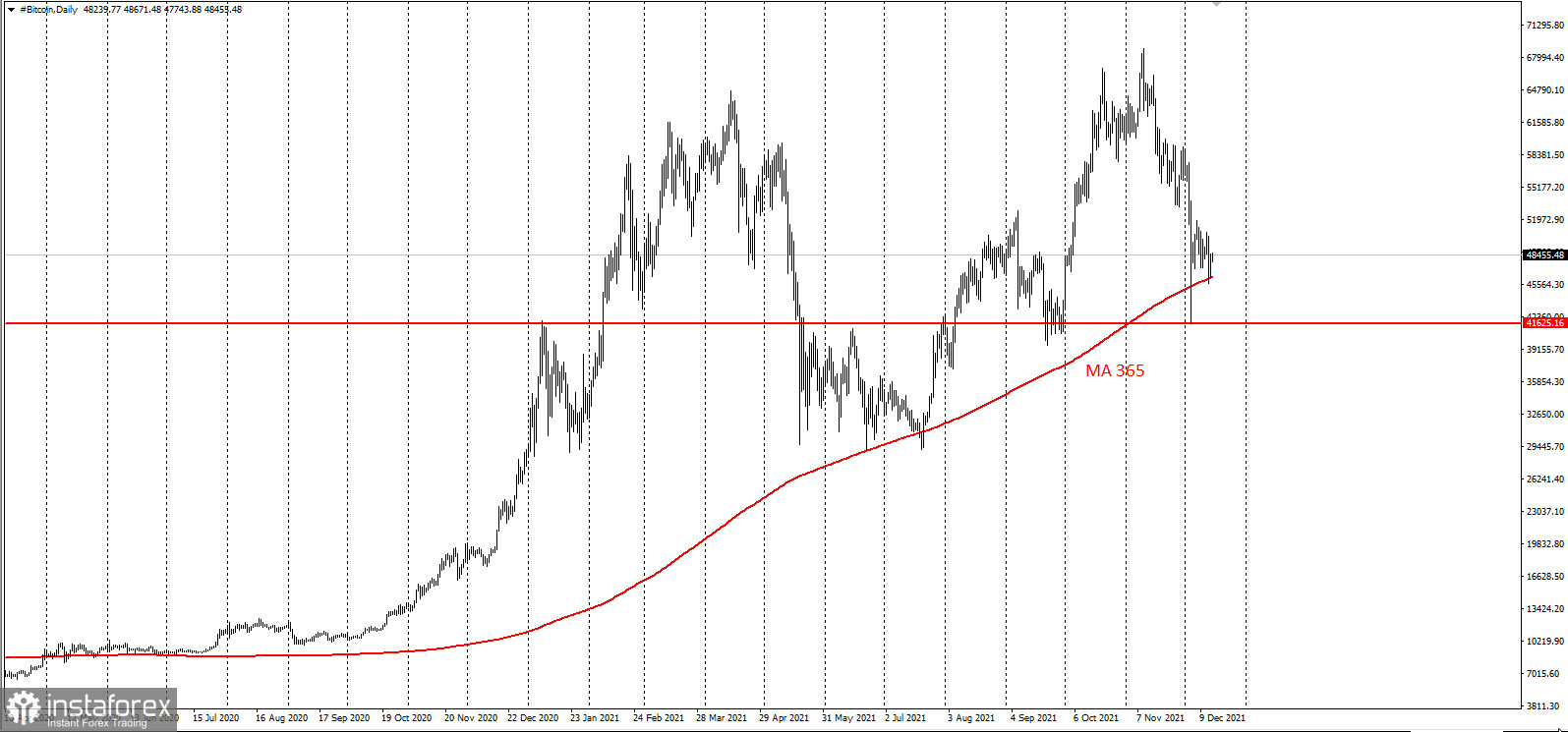
Bitcoin stabilized on Tuesday, following a drop from a record high in November. The reason was the decrease in speculative demand amid potential easing of central bank stimulus.
The largest digital token traded at $ 46,435 after falling 6.3% a day earlier. Many other tokens, such as Ether, Solana and Litecoin, also suffered losses.

Virtual coins have been struggling lately alongside other speculative investments, in part because central banks are holding back the liquidity that lifted many markets during the coronavirus crisis.
Bitcoin has retreated more than 30%, from an all-time high of $ 69,000. Proponents argue that the drop is temporary as retail and institutional buyers increasingly invest in cryptocurrencies.
"These once liquidity beneficiaries are the canary in the coal mine," said Chris Weston, head of research in Pepperstone Financial. "What the Fed giveth, they are now gearing to take away." He also noted that "crypto has the added tailwind from the adoption story."
In any case, Bitcoin is still up by 60% this year, outperforming traditional assets such as global equities, commodities and gold. But its large swings have thwarted narratives that portray it as a store of value and a hedge against inflation.
"The idea that as it matured, the volatility would ease has not really materialized," said Marc Chandler, chief market strategist at Bannockburn Global Forex. "The volatility is deadly and its other supposed attributes, like a hedge against inflation, seems spurious."
Bitcoin is currently testing the average price of the year and is growing on the average annual moving average (see screenshot above).





















